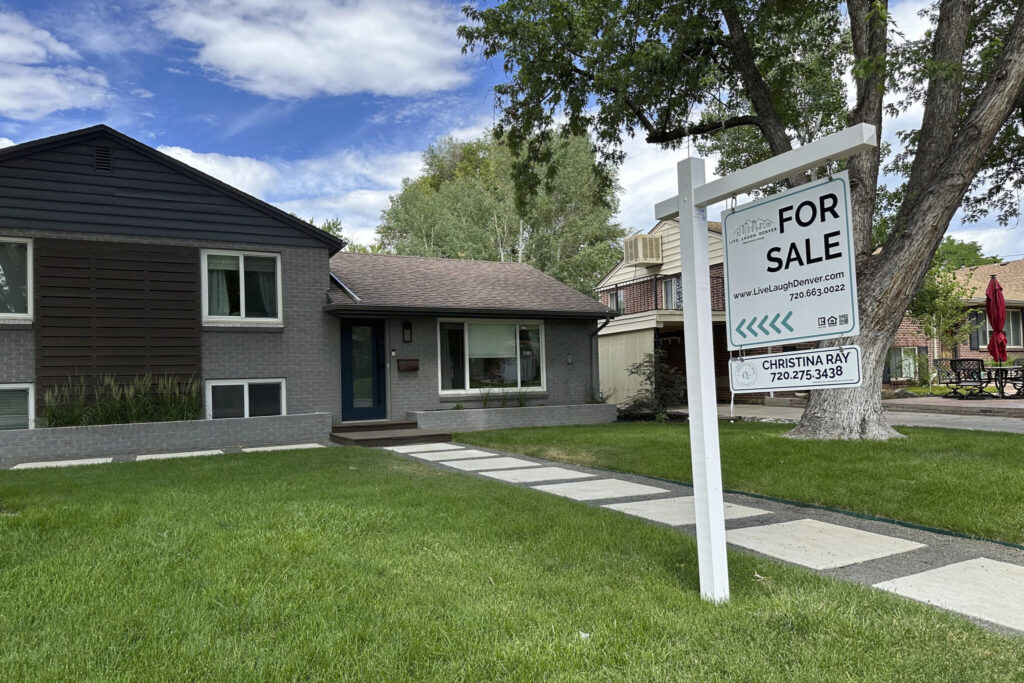The average rate on a 30-year mortgage fell this week to its lowest level since early February, easing borrowing costs for prospective homebuyers facing record-high home prices. The rate fell to 6.73% from 6.78% last week, mortgage buyer Freddie Mac said Thursday. A year ago, the rate averaged 6.9%. Borrowing costs on 15-year fixed-rate mortgages, popular with homeowners refinancing their home loans, also fell this week, pulling the average rate down to 5.99% from 6.07% last week. A year ago, it averaged 6.25%, Freddie Mac said.
Quick Read
- Average rate on a 30-year mortgage falls to 6.73%, lowest level since early February
- The average rate for a 30-year mortgage dropped to 6.73% this week, down from 6.78% last week, the lowest level since early February, according to Freddie Mac.
- Rates for 15-year fixed-rate mortgages also decreased, falling to 5.99% from 6.07% last week.
- The average rate on a 30-year mortgage last year at this time was 6.9%.
- Despite the recent decrease, mortgage rates remain significantly higher than three years ago when they hovered around 3%.
- High mortgage rates have contributed to a prolonged slump in the housing market, with sales of both new and previously occupied homes falling.
- The decrease in mortgage rates follows signs of cooling inflation, raising expectations that the Federal Reserve may cut its benchmark rate in September.
- Economists anticipate the average rate on a 30-year mortgage to stay above 6% for the rest of the year.
- Freddie Mac’s chief economist, Sam Khater, noted that expectations of a Fed rate cut and cooling inflation are positive signs, but affordability challenges continue to impact consumer confidence and homebuying activity.
The Associated Press has the story:
Average rate on a 30-year mortgage falls to 6.73%, lowest level since early February
Newslooks- LOS ANGELES (AP) —
The average rate on a 30-year mortgage fell this week to its lowest level since early February, easing borrowing costs for prospective homebuyers facing record-high home prices. The rate fell to 6.73% from 6.78% last week, mortgage buyer Freddie Mac said Thursday. A year ago, the rate averaged 6.9%. Borrowing costs on 15-year fixed-rate mortgages, popular with homeowners refinancing their home loans, also fell this week, pulling the average rate down to 5.99% from 6.07% last week. A year ago, it averaged 6.25%, Freddie Mac said.
After jumping to a 23-year high of 7.79% in October, the average rate on a 30-year mortgage has mostly hovered around 7% this year — more than double what it was just three years ago. The elevated mortgage rates, which can add hundreds of dollars a month in costs for borrowers, have discouraged home shoppers, extending the nation’s housing slump into its third year. Sales of previously occupied U.S. homes fell in June for the fourth month in a row. And sales of new single-family homes fell last month to the slowest annual pace since November.
Still, the average rate on a 30-year mortgage hasn’t gone above 7% since late May, reflecting recent signs of cooling inflation, which have raised expectations that the Federal Reserve will cut its benchmark rate in September. Mortgage rates are influenced by several factors, including how the bond market reacts to the central bank’s interest rate policy decisions. That can move the trajectory of the 10-year Treasury yield, which lenders use as a guide to pricing home loans. If bond yields decline in anticipation of a Fed rate cut, that could lead mortgage rates to ease further.
Most economists expect the average rate on a 30-year home loan to remain above 6% this year. “Expectations of a Fed rate cut coupled with signs of cooling inflation bode well for the market, but apprehension in consumer confidence may prevent an immediate uptick as affordability challenges remain top of mind,” said Sam Khater, Freddie Mac’s chief economist. “Despite this, a recent moderation in home price growth and increases in housing inventory are a welcoming sign for potential homebuyers.”







